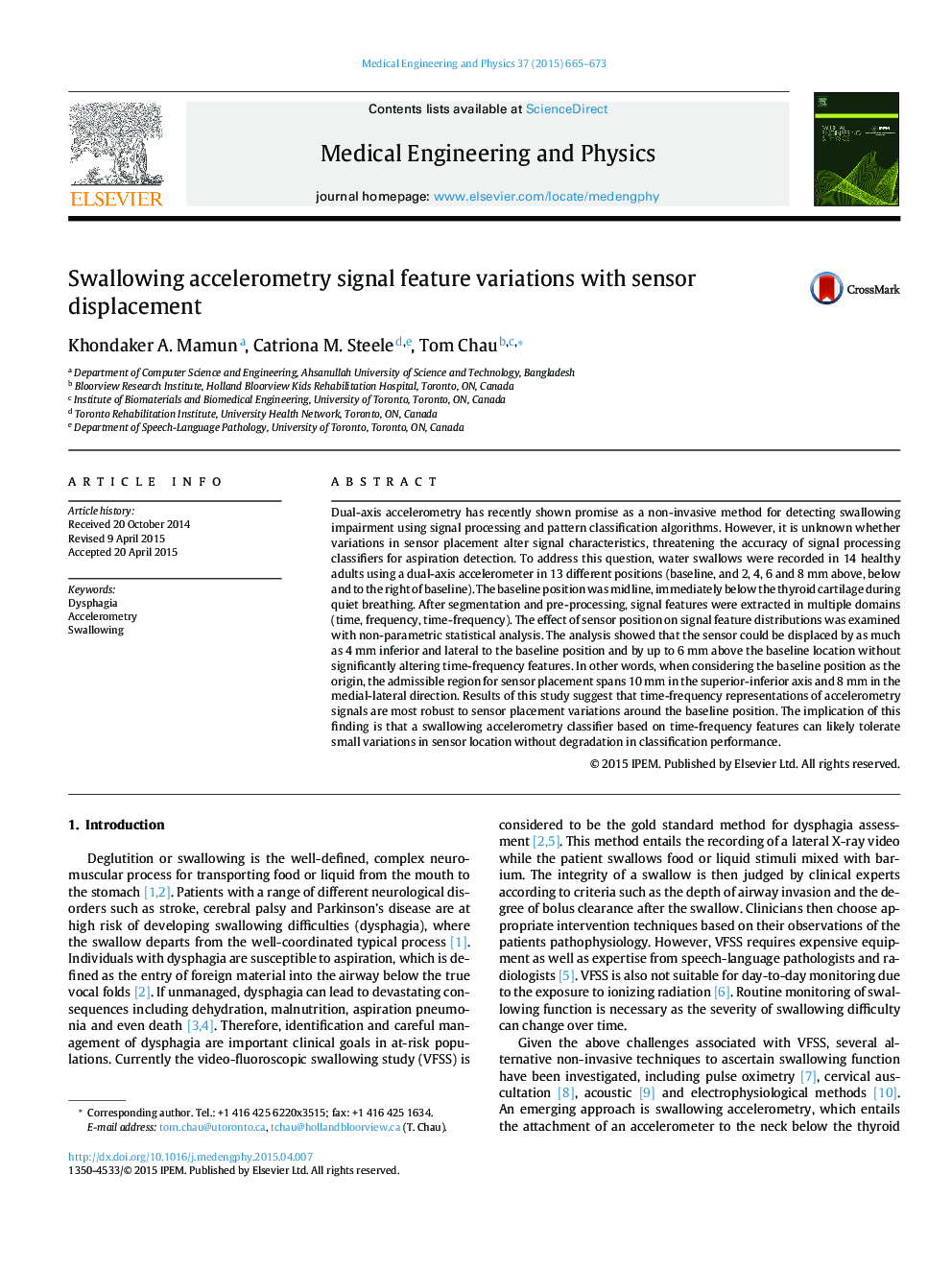| Article ID | Journal | Published Year | Pages | File Type |
|---|---|---|---|---|
| 10434987 | Medical Engineering & Physics | 2015 | 9 Pages |
Abstract
Dual-axis accelerometry has recently shown promise as a non-invasive method for detecting swallowing impairment using signal processing and pattern classification algorithms. However, it is unknown whether variations in sensor placement alter signal characteristics, threatening the accuracy of signal processing classifiers for aspiration detection. To address this question, water swallows were recorded in 14 healthy adults using a dual-axis accelerometer in 13 different positions (baseline, and 2, 4, 6 and 8Â mm above, below and to the right of baseline). The baseline position was midline, immediately below the thyroid cartilage during quiet breathing. After segmentation and pre-processing, signal features were extracted in multiple domains (time, frequency, time-frequency). The effect of sensor position on signal feature distributions was examined with non-parametric statistical analysis. The analysis showed that the sensor could be displaced by as much as 4Â mm inferior and lateral to the baseline position and by up to 6Â mm above the baseline location without significantly altering time-frequency features. In other words, when considering the baseline position as the origin, the admissible region for sensor placement spans 10Â mm in the superior-inferior axis and 8Â mm in the medial-lateral direction. Results of this study suggest that time-frequency representations of accelerometry signals are most robust to sensor placement variations around the baseline position. The implication of this finding is that a swallowing accelerometry classifier based on time-frequency features can likely tolerate small variations in sensor location without degradation in classification performance.
Keywords
Related Topics
Physical Sciences and Engineering
Engineering
Biomedical Engineering
Authors
Khondaker A. Mamun, Catriona M. Steele, Tom Chau,
